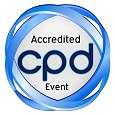
Katrina L Canon
Bicol University, Philippines
Title: Surfactants and lead (Pb): A baseline study for IEC material development
Biography
Biography: Katrina L Canon
Abstract
Statement of the Problem: Presence of contaminants in water is an important issue in the rural coastal areas. Island communities like Sagurong, San Miguel Island having no water treatment facilities and generally release effluents to different bodies of water. Given that the area has a marine protected area it will be a drawback on the overall objective of increasing the biomass of aquatic flora and fauna. More so, this study has evaluated the presence of surfactants and Pb in the area for information dissemination and possible action by the resident.
Methodology & Theoretical Orientation: The socio-economic profile of Sagurong has been updated through the use of a validated researcher-made instrument which was used as a guide during interview. Using purposive sampling method, water and bivalve samples were collected from the identified sites during May and August, 2016 for AAS and MBAS.
Findings: Analysis indicated that water samples from upstream (0.64mg/L) and sites 4 (0.527mg/L) and 5 (0.015mg/L) exceeded the 0.01mg/L MRL for Pb per DAO No. 2016-08 for Class SA waters. However during the wet month (August, 2016), water samples collected from MPA sites (0.748 mg/L; 0.722 mg/L) were found to exceed the MRLs. But bivalves samples collected during the wet and dry months have also exceeded the 1.5 mg/kg MRLs set by EU, 2010. On the other hand, surfactant levels in both water and bivalve samples were beyond the MRLs of DAO 2016-08.
Conclusion & Significance: Results of Pb and surfactant levels obtained both in water and bivalves are alarming because of its corresponding effect. MRLs in water and foods were set to lessen contaminants and pollutants so as to protect public health, aquatic life forms and other living organisms. As such, this information is deemed vital for dissemination through a suited IEC material for the information of the community as well proper government authority to reverse the situation and bring about change for better.

